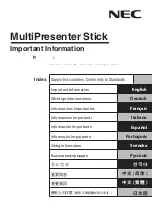
Chapter 5
Operation
51
5.4.6
Clean Cycles
As stated before, dark charge integrates on the array whenever the camera is on,
whether or not data acquisition is occurring. To minimize the dark charge and other
noise in the pixel wells when data acquisition is idle, the Clean Cycles function shifts
accumulated charge in a predefined number of rows to the shift register and then
discards it.
Clean cycles start when you turn the controller on and a clean pattern is programmed
into the controller. At the end of a cycle, the controller checks to see if a Start
Acquisition command has been received. If it has been received, the user-defined
number of cleans (typically 0) will be then performed before the exposure time starts. If
a Start Acquisition command has not been received, the next clean cycle begins.
The number of rows that are shifted and discarded during a clean cycle are defined in
the application software. The most effective cleaning occurs when the number of rows
equals the number of rows on the CCD. However, you need to keep in mind that a clean
cycle must be completed before a Start Acquisition command will be implemented. The
more rows in a cycle, the greater the delay between the command receipt and the
beginning of an exposure. Because of this timing issue, the number of rows per clean
cycle is usually much smaller than the number of rows on the array.
The timing diagram shown in
is for an experiment set up to acquire three (3)
images in Freerun timing mode with normal shutter operation selected. In this diagram,
clean cycles occur before the first exposure and after the last readout period. They do
not need to occur between exposures since each readout cleans the array before the
next exposure starts.
Figure 5-4: Clean Cycles in Freerun Operation
NOTE:
The start of the exposure is signaled by NOT SCAN going
high but will not occur until the current clean cycle and the
additional user-defined number of cleans (typically 0) have
finished. Number of Cleans is defined on the
Setup
►
Hardware Setup
►
Cleans/Skips tab page. If you
enter a value other than 0, you will further delay the start of
the exposure by that number of clean cycles.
4
4
11
-009
7_
002
2
Содержание Princeton Instruments PI-MTE
Страница 1: ...www princetoninstruments com PI MTE System Manual 4411 0097 Issue 6 October 1 2019...
Страница 22: ...22 PI MTE System Manual Issue 6 This page is intentionally blank...
Страница 25: ...Chapter 3 Installation 25 PI MTE System Diagram 4411 0097_0014...
Страница 26: ...26 PI MTE System Manual Issue 6 This page is intentionally blank...
Страница 58: ...58 PI MTE System Manual Issue 6 This page is intentionally blank...
Страница 66: ...66 PI MTE System Manual Issue 6 Figure 6 8 Flow Chart Safe Mode versus Fast Mode 4411 0097_0032...
Страница 90: ...90 PI MTE System Manual Issue 6 This page is intentionally blank...
Страница 94: ...94 PI MTE System Manual Issue 6 Figure B 2 PI MTE Camera 8 01 05 and later 4411 0097_0054...
Страница 95: ...Appendix B Outline Drawings 95 Figure B 3 PI MTE Camera 8 01 05 and earlier 4411 0097_0055...
Страница 102: ...102 PI MTE System Manual Issue 6 This page is intentionally blank...
Страница 112: ...112 PI MTE System Manual Issue 6 This page is intentionally blank...
Страница 117: ...This page is intentionally blank...
















































